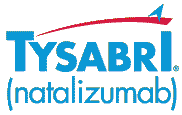Tysabri Protects Against Relapse in Multiple Sclerosis, According To Study
Written by |

 According to a study published in JAMA Neurology, multiple sclerosis patients are greatly benefited by Biogen Idec’s Tysabri (natalizumab) and tend to relapse if they discontinue treatment. Natalizumab had a protective effect on patients who were continuously treated with Tysabri beyond a 24-dose timepoint within the study, compared to those who switched treatment or discontinued treatment.
According to a study published in JAMA Neurology, multiple sclerosis patients are greatly benefited by Biogen Idec’s Tysabri (natalizumab) and tend to relapse if they discontinue treatment. Natalizumab had a protective effect on patients who were continuously treated with Tysabri beyond a 24-dose timepoint within the study, compared to those who switched treatment or discontinued treatment.
To begin, patients with progressive multifocal leukoencephalopathy (PML), a disease that damages myelin in the brain similar to multiple sclerosis, are often infected with polomavirus John Cunningham (JC virus). If a patient’s immunity is lowered, JC virus can wreak havoc, and there is no cure for JC virus infection.
Multiple sclerosis patients are a a high risk for developing PML. Many multiple sclerosis patients are also treated with natalizumab, which is an monoclonal antibody immunosuppressive medication. Putting the two together, some multiple sclerosis patients see a risk for extended use of Tysabri and desire a different treatment.
“It’s difficult for patients to make decisions, and I think they need time to make their decisions,” said Kjell-Morten Muhr, MD, PhD, from University of Bergen, Norway, in a report from Medscape Medical News. In his experience, when the risk of PML for multiple sclerosis patients is explained, some patients initially choose to remain on Tysabri but eventually ask to switch after long consideration.
[adrotate group=”4″]
The study at hand shows that patients ought not to discontinue Tysabri unless they have a positive JC virus test. “For those that are JC virus negative, there is no reason to stop [treatment] after 24 months. They should continue,” said Dr. Myhr. “These patients that could be considered for stopping or switching are JC virus positive after 24 months.”
One hundred thirty patients with relapse-remitting multiple sclerosis were followed during the one-year study, written by lead author Marinella Clerico, MD, and principal investigator Luca Durelli, MD, among others. At baseline, no differences in clinical characteristics were found among patients, and the primary outcome measured at the end of the study was mean annualized relapse rate. After 24 doses of natalizumab, patients were counseled to continue with 300 mg intravenous natalizumab every 28 days, switch treatments, discontinue treatment, or use the antineoplastic agent mitoxantrone.
Clinical and radiologic multiple sclerosis activity was lower in continued natalizumab than interrupted natalizumab patient groups. Continued natalizumab was also superior to swtichers or quitters, where there was a 4.40-fold and 3.28-fold odds ratio for relapse, respectively.
“Our study provides evidence to support the choice of continuing treatment with natalizumab after the 24th administration,” said Dr. Durelli, of the University of Torino and the San Luigi Gonzaga University Hospital in Obassano, Italy. Dr. Durelli also presented results at the 24th Meeting of the European Neurological Society.





